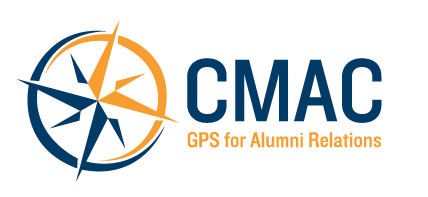Three strategies to scale up alumni-student connections
Alumni-student connection initiatives designed to foster the growth of mentoring relationships have popped up worldwide over the last decade. They’re often organized jointly at universities by alumni relations, career services, and student success teams. Frequently, mentoring initiatives are facilitated through partnerships between centralized administrative groups, schools, and academic departments. These programs are designed to teach students how to build their professional networks while providing alumni with a meaningful and potentially life-changing opportunity to volunteer.
Technology has played a vital role over the last decade in helping colleges and universities scale alumni-student connections. Although LinkedIn remains the most important tool available for alumni and students to build their networks, companies like Graduway, PeopleGrove, Almabase, and Hivebrite have created solutions that have better-enabled universities to reach a much higher level of engagement. Network platforms have helped change the higher education landscape and provided an ecosystem for alumni volunteers to network and provide career coaching and advice to students and recent graduates.
From my conversations with alumni and career leaders, it also seems clear that many, if not most, engagement leaders do not believe that the network platform they bought represents the complete solution to activating networks and connecting stakeholders as they imagine. At least, not yet anyway.
Huge swaths of alumni and students at almost every college and university remain unengaged or under-engaged. So the question most alumni and career leaders are asking is, “What can be done to avoid a plateau and continue on an engagement growth trajectory?”
Here are three strategies that alumni and career teams can take to increase engagement and facilitate more professional connections over the long run that will better enable network development:
(1) To facilitate more alumni-student connections, career teams need to cultivate students in an ongoing capacity and model the outreach tactics and strategies deployed by advancement teams and alumni associations.
One of the dynamics I’ve spent some time thinking about from my tenure leading the Office of Alumni and Career Services at Longwood University was that our outreach strategy was different for alumni than for students. For alumni and donors, the discovery work was ongoing. Our office, along with colleagues in development, would proactively reach out to alumni and ask about their affinities, memories, connections, and thoughts on their alma mater. We used these strategies to suggest programs and recruit volunteers more effectively because the interests of alumni are understood, and therefore, we offered more personalized engagement.
Our career services-focused team members, including myself, engaged students in a more transactional way around appointments and presentations rather than cultivating them as individuals like we were doing with alumni. We provided career education and services and got a glimpse of their interest while coaching, but there was no equivalent outreach to students that modeled our alumni efforts.
(2) Colleges and universities should develop an approach to engagement that leads to the creation of a student talent pipeline — similar to the work that a staffing and recruitment agency might perform.
Creating a student talent pipeline means taking a proactive approach to screening, surveying, and interviewing students and storing that information to be used later. For example, students attending a career presentation or 1-1 appointment should be surveyed for information that might help teams facilitating alumni-student connections ultimately make better matches.
The talent pipeline approach might be enhanced with a robust referral system in place. By designing and developing a campus-wide referral process for faculty, staff, and coaches to recommend students they know, a layer of vetting is added. This referral system can help ensure that connections lead to positive interactions. Not every student is a good fit for these types of programs.
Teach students and recent grads how to ask questions that will prompt the type of advice from alumni that would be helpful for personal and professional growth.
Knowing the interests and career aspirations of a larger number of students, and putting into place a set of processes to collect that information, will enable engagement teams to make stronger connections and recruit alumni volunteers more strategically. In addition, career and alumni teams can work together and better steer students towards the answers to their career questions. If we know a student’s unique interests, we can coach them on how and where to ask those questions and get usable results. Ultimately, my experience is that alumni are eager to help answer these types of questions.
What does it all mean?
I believe taking a talent pipeline development approach and conducting rigorous, but calculated, outreach to and with students over time will provide the framework for future success. This change reflects a significant shift from how most career services teams think of their work engaging students and providing services. Ultimately, only a substantial change in philosophy and tactics will yield a stronger foundation for scaling up alumni-student connections. Collaboration with other student engagement teams and the alumni office will likely be crucial for success.
With a renewed focus on outreach, talent development, and teaching students how to ask great questions, a new data and engagement infrastructure will be created, enabling network platforms to be better tools and help teams achieve stronger results over the long term.
Ryan is an engagement strategist and consultant with Chris Marshall Advancement Consulting Washburn & McGoldrick, and Network Catalyst with Protopia. Follow Ryan on twitter @RyanCatherwood or on Instagram @rcatherwood. Listen to the web show Alum-Less live on LinkedIn, every-other-Friday at 11:30 am ET, or check out the podcast edition.








